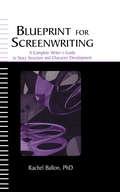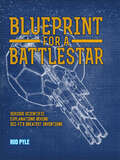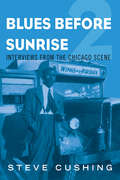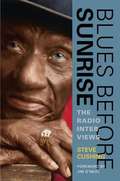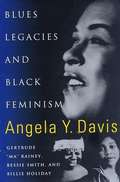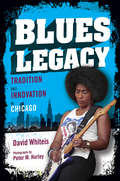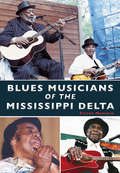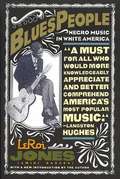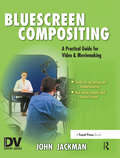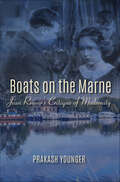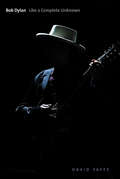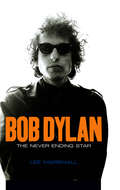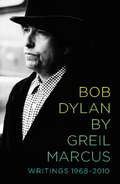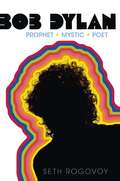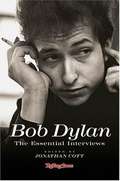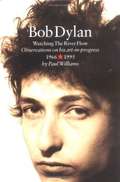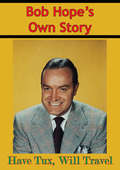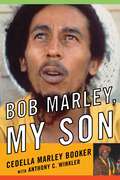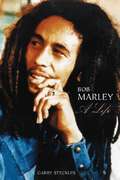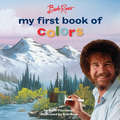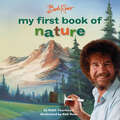- Table View
- List View
Blueprint for Screenwriting: A Complete Writer's Guide to Story Structure and Character Development
by Rachel BallonBlueprint for Screenwriting demystifies the writing process by developing a "blueprint" for writers to follow for each new screenplay--from original concept to completed script. Author and international script consultant Dr. Rachel Ballon explores the writing craft and emphasizes creativity in the writing process. She blends her expertise in script analysis and writing coaching with her personal experience as a screenwriter to help writers construct their stories and characters.Starting with the story's framework, Dr. Ballon helps readers to understand the key "building blocks" of story structure and character development, including characters' emotional and psychological states, story conflicts, and scene and act structure. She also covers the essential components in the script writing process, such as outlines, script treatments, synopses, and formats. Dr. Ballon devotes a chapter to overcoming writer's block--the writer's greatest obstacle--and offers guidance for taking the next steps once a script is completed.A practical tool for any writer, this distinctive resource:*offers a blueprint for writers to follow, breaking the writing process down into specific, easy-to-follow steps;*stresses the psychology of the characters as well as that of the writer; and*offers first-hand knowledge of the screenwriting process and gives practical advice for completing and marketing scripts.With its unique and insightful approach to the writing process, this book will be indispensable for scriptwriters, fiction writers, and professional writers, and it will serve as a useful text in screenwriting courses.
Blueprint for a Battlestar: Serious Scientific Explanations Behind Sci-Fi's Greatest Inventions
by Rod Pyle“An enjoyable source of information on a wide variety of real or imagined technological marvels of the space age.” —National Space SocietyThis beautifully illustrated pop science book answers the enduring questions raised by science fiction, such as: Do hoverboards really exist, how can you bring a dinosaur back to life and can we really travel in time and space.Packed with stunning images, including seventy-five illustrations created exclusively for this book, Blueprint for a Battlestar takes twenty-five remarkable and memorable technologies from the world of sci-fi, from Star Wars and The Matrix to Ironman and The Terminator. Each concept will be explained and dissected to reveal the real science behind it. Some are boldly obvious—such as the Death Star and exoskeletons—and some less so (think bio-ports or cloaking devices). All are fascinating and will make wonderful explorations into the science of the future as we understand it today.“This is dream fuel for aspiring STEM students of all sorts. Blueprint for a Battlestar is a gateway drug for brainstorming that could change the world.” —Seattle Book Review“Will take readers on a fact-finding mission where the science is explained and the fiction just may become reality. Can it really work? For the sake of all those young engineers out there dreaming of a future filled with massive battlestars stretching far across the galaxy, we can only hope.” —Amazing Stories Magazine“A fun book that offers serious exploration of some of the technology that could be common place in the not too distant future.” —The Review Graveyard
Blues Before Sunrise 2: Interviews from the Chicago Scene (Music in American Life)
by Steve CushingIn this new collection of interviews, Steve Cushing once again invites readers into the vaults of Blues Before Sunrise, his acclaimed nationally syndicated public radio show. Icons from Memphis Minnie to the Gay Sisters stand alongside figures like schoolteacher Flossie Franklin, who helped Leroy Carr pen some of his most famous tunes; saxman Abb Locke and his buddy Two-Gun Pete, a Chicago cop notorious for killing people in the line of duty; and Scotty "The Dancing Tailor" Piper, a font of knowledge on the black entertainment scene of his day. Cushing also devotes a section to religious artists, including the world-famous choir Wings Over Jordan and their travails touring and performing in the era of segregation. Another section focuses on the jazz-influenced Bronzeville scene that gave rise to Marl Young, Andrew Tibbs, and many others while a handful of Cushing's early brushes with the likes of Little Brother Montgomery, Sippi Wallace, and Blind John Davis round out the volume.Diverse and entertaining, Blues Before Sunrise 2 adds a chorus of new voices to the fascinating history of Chicago blues.
Blues Before Sunrise: The Radio Interviews
by Steve Cushing Jim O'NealThis collection assembles the best interviews from Steve Cushing's long-running radio program Blues Before Sunrise, the nationally syndicated, award-winning program focusing on vintage blues and R&B. As both an observer and performer, Cushing has been involved with the blues scene in Chicago for decades. His candid, colorful interviews with prominent blues players, producers, and deejays reveal the behind-the-scenes world of the formative years of recorded blues. Many of these oral histories detail the careers of lesser-known but greatly influential blues performers and promoters. The book focuses in particular on pre-World War II blues singers, performers active in 1950s Chicago, and nonperformers who contributed to the early blues world. Interviewees include Alberta Hunter, one of the earliest African American singers to transition from Chicago's Bronzeville nightlife to the international spotlight, and Ralph Bass, one of the greatest R&B producers of his era. Blues expert, writer, record producer, and cofounder of Living Blues Magazine Jim O'Neal provides the book's foreword.
Blues Journey
by Walter Dean MyersThe African experience in America is celebrated with a soulful, affecting blues poem that details the long journey from the Middle Passage to life today.
Blues Legacies and Black Feminism: Gertrude "Ma" Rainey, Bessie Smith, and Billie Holiday
by Angela Y. DavisThe author of "Women, Race and Class" suggests that "Ma" Rainey, Bessie Smith, and Billie Holiday represent a black working-class, feminist ideology and historical consciousness. Davis' illuminating analysis of the songs performed by these artists provides readers with a compelling and transformative understanding of their musical and social contributions and of their relation to both the African-American community and American culture.
Blues Legacy: Tradition and Innovation in Chicago (Music in American Life #489)
by David WhiteisChicago blues musicians parlayed a genius for innovation and emotional honesty into a music revered around the world. As the blues evolves, it continues to provide a soundtrack to, and a dynamic commentary on, the African American experience: the legacy of slavery; historic promises and betrayals; opportunity and disenfranchisement; the ongoing struggle for freedom. Through it all, the blues remains steeped in survivorship and triumph, a music that dares to stare down life in all its injustice and iniquity and still laugh--and dance--in its face. David Whiteis delves into how the current and upcoming Chicago blues generations carry on this legacy. Drawing on in-person interviews, Whiteis places the artists within the ongoing social and cultural reality their work reflects and helps create. Beginning with James Cotton, Eddie Shaw, and other bequeathers, he moves through an all-star council of elders like Otis Rush and Buddy Guy and on to inheritors and today's heirs apparent like Ronnie Baker Brooks, Shemekia Copeland, and Nellie "Tiger" Travis. Insightful and wide-ranging, Blues Legacy reveals a constantly adapting art form that, whatever the challenges, maintains its links to a rich musical past.
Blues Musicians of the Mississippi Delta
by Steven ManheimThe Mississippi Delta blues run as deep and mysterious as the beautiful land from where the music originates. Blues legends B.B. King, Muddy Waters, John Lee Hooker, Howlin' Wolf, Sonny Boy Williamson, and countless other greats came from this region. The Delta blues, born as work songs in Mississippi cotton fields, was played on city street corners and in rural juke joints. With the Great Migration of African Americans in the first half of the 20th century, the Delta blues also made its way from Mississippi to Chicago. The sound of the blues would become the blueprint for the birth of rock and roll in Memphis in the 1950s. The era of the great Delta blues musicians is over, but their legacy remains an important chapter in American music. This book contains images of these important performers and the rich Delta landscapes that influenced their music.
Blues People: Negro Music in White America
by Amiri Baraka Leroi Jones"The path the slave took to 'citizenship' is what I want to look at. And I make my analogy through the slave citizen's music -- through the music that is most closely associated with him: blues and a later, but parallel development, jazz. . . [If] the Negro represents, or is symbolic of, something in and about the nature of American culture, this certainly should be revealed by his characteristic music. " So says Amiri Baraka in the Introduction to Blues People, his classic work on the place of jazz and blues in American social, musical, economic, and cultural history. From the music of African slaves in the United States through the music scene of the 1960's, Baraka traces the influence of what he calls "negro music" on white America -- not only in the context of music and pop culture but also in terms of the values and perspectives passed on through the music. In tracing the music, he brilliantly illuminates the influence of African Americans on American culture and history.
Bluescreen Compositing: A Practical Guide for Video & Moviemaking (Dv Expert Ser.)
by John JackmanMaster the art and technique of blue and greenscreen compositing with this comprehensive how-to course in creating effective and realistic composited scenes in video formats. You get clear, understandable explanations of the different types of keying techniques and how they work, including real-world examples and tutorials. Topics include setting up a greenscreen studio, how to light the screen effectively, how to light the talent or foreground material, and matching lighting to the composited background plate. Complete tutorials of each of the major software keyers walk you through the process for creating a clean and accurate composite.
Boats on the Marne: Jean Renoir's Critique of Modernity
by Prakash YoungerBoats on the Marne offers an original interpretation of Jean Renoir's celebrated films of the 1930s, treating them as a coherent narrative of philosophical response to the social and political crises of the times. Grounded in a reinterpretation of the foundational film-philosopher André Bazin, and drawing on work from a range of disciplines (film studies, art history, comparative literature, political and cultural history), the book's coordinated consideration of Renoir's films, writings, and interviews demonstrates his obsession with the concept of romanticism. Renoir saw romanticism to be a defining feature of modernity, a hydra-headed malady which intimately shapes our personal lives, culture, and politics, blinding us and locking us into agonistic relationships and conflict. While mapping the popular manifestations of romanticism that Renoir engaged with at the time, this study restores the philosophic weight of his critique by tracing the phenomenon back to its roots in the work and influence of Jean-Jacques Rousseau, who first articulated conceptions of human desire, identity, community, and history that remain pervasive today. Prakash Younger argues that Renoir's films of the 1930s articulate a multi-stranded narrative through which the director thinks about various aspects of romanticism and explores the liberating possibilities of an alternative paradigm illuminated by the thought of Plato, Montaigne, and the early Enlightenment. When placed in the context of the long and complex dialogue Renoir had with his audience over the course of the decade, masterpieces such as La Grande Illusion and La Règle du Jeu reveal his profound engagement with issues of political philosophy that are still very much with us today.
Bob Dylan
by David YaffeBob Dylan is an iconic figure in American musical and cultural history, lauded by Time magazine as one of the hundred most important people of the twentieth century. For nearly fifty years the singer-songwriter has crafted his unique brand of music, from his 1962 self-titled debut album to 2009's #1 hit Together Through Life, appealing to everyone from baby boomers to the twenty-somethings who storm the stage at his concerts. In Bob Dylan: Like a Complete Unknown, literary scholar and music critic David Yaffe considers Dylan from four perspectives: his complicated relationship to blackness (including his involvement in the civil rights movement and a secret marriage with a black backup singer), the underrated influence of his singing style, his fascinating image in films, and his controversial songwriting methods that have led to charges of plagiarism. Each chapter travels from the 1960s to the present, offering a historical perspective on the many facets of Dylan's life and career, exploring the mystery that surrounds the enigmatic singer and revealing the complete unknown Dylan.
Bob Dylan
by Lee MarshallBob Dylan's contribution to popular music is immeasurable. Venerated as rock's one true genius, Dylan is considered responsible for introducing a new range of topics and new lyrical complexity into popular music. Without Bob Dylan, rock critic Dave Marsh once claimed, there would be no popular music as we understand it today. As such an exalted figure, Dylan has been the subject of countless books and intricate scholarship considering various dimensions of both the man and his music. This book places new emphasis on Dylan as a rock star. Whatever else Dylan is, he is a star - iconic, charismatic, legendary, enigmatic. No one else in popular music has maintained such star status for so long a period of time. Showing how theories of stardom can help us understand both Bob Dylan and the history of rock music, Lee Marshall provides new insight into how Dylan's songs acquire meaning and affects his relationship with his fans, his critics and the recording industry. Marshall discusses Dylan's emergence as a star in the folk revival (the "spokesman for a generation") and the formative role that Dylan plays in creating a new type of music - rock - and a new type of star. Bringing the book right up to date, he also sheds new light on how Dylan's later career has been shaped by his earlier star image and how Dylan repeatedly tried to throw off the limitations and responsibilities of his stardom. The book concludes by considering the revival of Dylan over the past ten years and how Dylan's stardom has developed in a way that contains, but is not overshadowed by, his achievements in the 1960s.
Bob Dylan and Philosophy: It's Alright, Ma (I'm Only Thinking)
by Peter Vernezze Carl J. PorterIn Bob Dylan and Philosophy, eighteen philosophers analyze Dylan's ethical positions, political commitments, views on gender and sexuality, and his complicated and controversial attitudes toward religion.
Bob Dylan by Greil Marcus: Writings 1968-2010
by Greil MarcusHis foremost interpreter revisits more than forty years of listening to Dylan?weaving individual moods and moments into a brilliant history of their changing times
Bob Dylan y Leonard Cohen: Poetas del Rock and Roll
by David Boucher<P>Bob Dylan y Leonard Cohen transformaron el arte de leer la música, escuchar la literatura y escribir la historia. <P>La década de los 60, que los vio nacer como artistas, los convirtió en voceros involuntarios de una generación privada de derechos, desconcertada y desilusionada del mundo, consternada por la guerra y el fascismo. <P>Este fascinante retrato político, cultural, artístico y psicológico de estos escritores e intérpretes icónicos muestra cómo se convirtieron en los maestros de la expresión emocional, en una brújula de los poetas beat, cómo se revolucionaron a sí mismos y a una generación en busca de sus sueños. <P>Sin Dylan, anota Boucher, «es inconcebible que los Beatles hubieran desarrollado más allá de las canciones trilladas y vibrantes de los años 60, o que David Bowie llevara la narrativa de la canción a nuevas alturas». Y Cohen «fue el beneficiario de esta liberación, llevando la seriedad a nuevos límites».
Bob Dylan: Prophet, Mystic, Poet
by Seth RogovoyBob Dylan and his artistic accomplishments have been explored, examined, and dissected year in and year out for decades, and through almost every lens. Yet rarely has anyone delved extensively into Dylan's Jewish heritage and the influence of Judaism in his work. In Bob Dylan: Prophet, Mystic, Poet, Seth Rogovoy, an award-winning critic and expert on Jewish music, rectifies that oversight, presenting a fascinating new look at one of the most celebrated musicians of all time. Rogovoy unearths the various strands of Judaism that appear throughout Bob Dylan's songs, revealing the ways in which Dylan walks in the footsteps of the Jewish Prophets. Rogovoy explains the profound depth of Jewish content -- drawn from the Bible, the Talmud, and the Kabbalah -- at the heart of Dylan's music, and demonstrates how his songs can only be fully appreciated in light of Dylan's relationship to Judaism and the Jewish themes that inform them. From his childhood growing up the son of Abe and Beatty Zimmerman, who were at the center of the small Jewish community in his hometown of Hibbing, Minnesota, to his frequent visits to Israel and involvement with the Orthodox Jewish outreach movement Chabad, Judaism has permeated Dylan's everyday life and work. Early songs like "Blowin' in the Wind" derive central imagery from passages in the books of Ezekiel and Isaiah; mid-career numbers like "Forever Young" are infused with themes from the Bible, Jewish liturgy, and Kabbalah; while late-period efforts have revealed a mind shaped by Jewish concepts of Creation and redemption. In this context, even Dylan's so-called born-again period is seen as a logical, almost inevitable development in his growth as a man and artist wrestling with the burden and inheritance of the Jewish prophetic tradition. Bob Dylan: Prophet, Mystic, Poet is a fresh and illuminating look at one of America's most renowned -- and one of its most enigmatic -- talents.
Bob Dylan: The Essential Interviews
by Jonathan CottThirty-one of the most significant and revealing conversations with Dylan have been compiled in this volume. Among the highlights are the seminal "Rolling Stone" interviews by Jann Wenner, Jonathan Cott, Kurt Loder, and Mikal Gilmore.
Bob Dylan: Watching the River Flow, Observations on His Art-in-Progress, 1966+1995
by Paul WilliamsWatching The River Flow is an outstanding collection of Dylan-related essays by Paul Williams, the noted US editor and critic, opening with his 1966 review of Blonde On Blonde and closing with his observations about Dylan's 1995 tour with Patti Smith. The author of over 20 books, including the two highly acclaimed volumes of Dylan criticism, Performing Artist 1960-73 and Performing Artist 1974-86, no American writer has followed Dylan more closely, nor written about his work with more insight.
Bob Hope’s Own Story - Have Tux, Will Travel: Bob Hope's Own Story
by Bob Hope Pete Martin"If I had my life to live over again, I wouldn't have time." -- Bob HopeThe legendary wit and unmistakable voice of America's favorite showman are captured here in the master entertainer's memoir of his first fifty years in show business.From his one-night stands in vaudeville to countless performances for servicemen on U.S. military bases across the globe, this delightfully candid book of funny life stories is pure Hope. In his own words, Hope recalls his brief career as an amateur prizefighter; his flops and successes in vaudeville; memories of sharing the stage with Ethel Merman and Jimmy Durante; his courtship of the young singer who would become his bride; his forgettable first screen test; his friendship with Bing Crosby and their high jinks on the sets of the famous Road pictures; poignant and hair-raising trips to entertain the troops; a personal request from General Patton; and eighteen holes of golf with President Eisenhower.Bob Hope was the unchallenged king of the one-liner, a consummate performer, and a beloved supporter of our men in uniform, and his irrepressible spirit shines through in these hilarious, nostalgic, and truly memorable stories from a life lived to bring laughter to others.-Print ed.
Bob Marley, My Son
by Cedella Marley BookerIn this revealing and poignant account of the life of her son, reggae icon Bob Marley (1945–1980), Mother Cedella Marley Booker traces the unique history of Bob Marley and his contribution to popular music as only a parent could.Booker recalls her poor rural upbringing in the district of Nine Miles in Jamaica, her parents&’ relationship, and her courtship with Captain Marley, the white man forty years her senior who turned up one day in her father&’s fields and took Cedella to his bed when she was just sixteen. Their child was Bob Marley, who would introduce the world to reggae, and whose talent would later transform the course of popular music with such classics as &“Get Up, Stand Up,&” &“Buffalo Soldier,&” &“No Woman, No Cry,&” Stir It Up,&” and &“One Love.&”With admirable candor, Booker shares her struggles in raising Bob on her family&’s farm in St. Ann&’s and the crime-riddled streets of Kingston, and her courageous move to start a new life in the United States. Bob stayed behind in Jamaica to perfect his music, though the two remained close as he began his transformation into reggae superstar and cultural prophet. Booker details Marley&’s embrace of Rastafarianism, the women in his life, his use of ganja, and his last months when Cedella nursed him until he succumbed to cancer. This book is a true look at Marley&’s life—not just as a cultural icon, but as a son.
Bob Marley: A Life
by Garry StecklesThis biography on reggae legend Bob Marley reflects the growing popularity and legacy that continues to grow more than 27 years after the singer's death from cancer at age 36. Steckles has been writing about the reggae music scene for many years, and he was granted access to an enormous archive of material to produce the most vivid and detailed account of Marley's life to date, concentrating on his Rastafarian faith, devotion to marijuana, turbulent family life and his global influence on World Music.
Bob Ross' Happy Little Night Before Christmas
by Robb Pearlman2022 IPPY AWARDS SILVER MEDALIST - HOLIDAY &“[A] breathtaking family treasure to page through, highly recommended.&” —Midwest Book Review An instant holiday classic. A happy little Christmas miracle. Even after more than 20 years after his death, pop culture icon, painter, host, and teacher Bob Ross has never been more heralded than he is today. His memorable quotes, friendly face, and signature hairstyle grace merchandise and memes around the world. But what makes Bob as beloved as he is are ultimately his core values, and his peaceful, joyful demeanor that encouraged his students and viewers to not only appreciate their natural talents but to appreciate the natural world around them. Bob was, in many respects, the embodiment of the classic holiday sprint which encourages peace on Earth and good will toward men. Now, for the first time, inspired by the classic Clement C. Moore&’s story, this fully-authorized tale of a painter (and his little squirrel friend) on a cold winter night pairs Bob Ross's most beautiful wintertime landscapes with a meditation on embracing not only your inner creativity, but the beauty of nature, and the feelings of peace, friendship, and harmony that blankets the entire holiday season like a happy little snowfall. Perfect for families, fans, and painters of all ages, Bob Ross&’s Happy Little Night Before Christmas is the perfect addition to any holiday tradition.
Bob Ross: My First Book of Colors
by Robb PearlmanA titanium snowcapped mountain. A happy little tree made with Van Dyke Brown and Dark Sienna. A majestic, vibrant phthalo blue sky. Bob Ross: My First Book of Colors is an early concept board book featuring various Bob Ross paintings and some of Bob's little quips about each of the thirteen colors he used on his palette in front of TV audiences. Full of real paintings from the iconic artist, this is sure to be a hit for any Bob Ross fan.Colors include: Alizarin Crimson Bright Red Cadmium Yellow Hue Dark Sienna Indian Yellow Midnight Black Phthalo Blue Prussian Blue Sap Green Titanium White Van Dyke Brown Yellow Ochre
Bob Ross: My First Book of Nature (My First Bob Ross Books)
by Robb PearlmanThe second official board book featuring Bob Ross's stunning, iconic paintings with a special nod to the natural world.Happy little clouds. Tall, snow-capped mountains. River rocks. The beauty of nature is everywhere. Bob Ross: My First Book of Nature is an early concept board book featuring various Bob Ross paintings and some of Bob's little quips about all of the beautiful sights seen in nature and that he painted in front of TV audiences. Full of real paintings from the iconic artist, this follow up to Bob Ross: My First Book of Colors is sure to be a hit for any Bob Ross fan.
